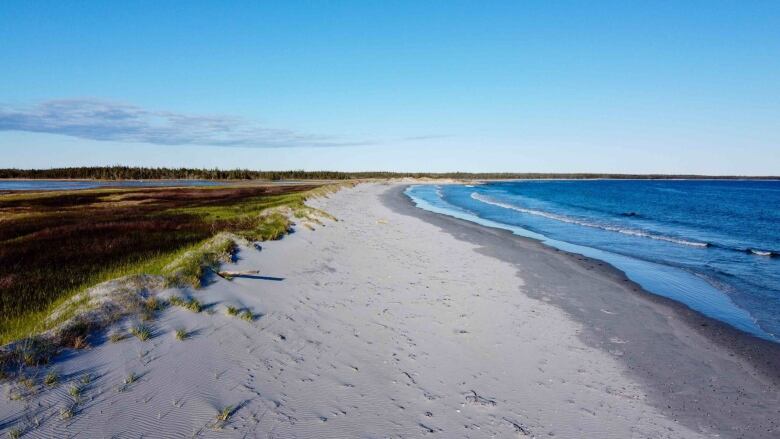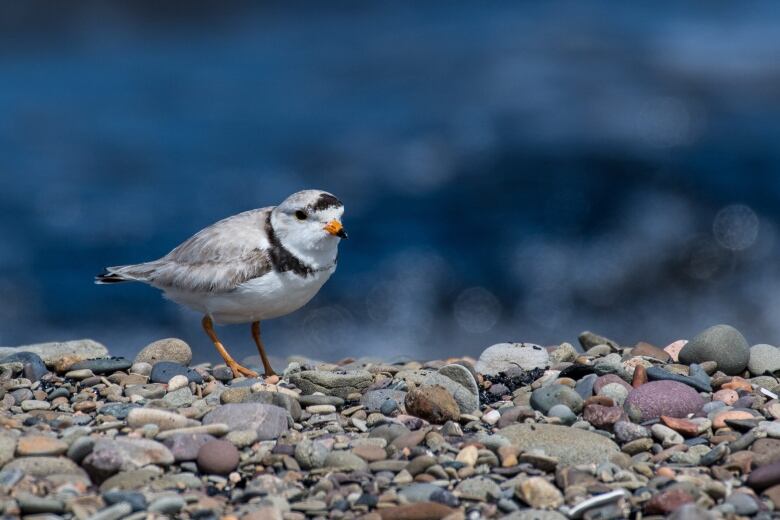Nova Scotia Nature Trust purchases beach to save coastal area, protect at-risk birds
The 147 hectares of intact coastal beach, sand dunes and wetlands was purchased for $780K

The Nova Scotia Nature Trust has purchased a coastal wilderness area near Port La Tour, N.S., to save it from future development and provide a safe space for at-risk birds.
Port La Tour Beach, which is about 11 kilometres south of Barrington, N.S.,has 147 hectares of intact coastal ecosystem, which is home to diverse wildlife species.
"It's so exciting when we're able to protect any of our coast. It's so treasured by people, but also so threatened," said Bonnie Sutherland, executive director of the Nature Trust.
The majority of Nova Scotia's coast 85 per cent is privately owned and is at risk of being sold and developed.

"Habitats are disappearing. Our birds are in trouble and people are losing access to the coast," Sutherland said. "So [this purchase] is great news for Nova Scotians and for nature too."
This newly protected area adds to the adjacent provincially protected Port La Tour Bogs Wilderness Area, which covers 1,032 hectares of land.
'Truly is protected forever'
Sutherland said the Nature Trust has been monitoring this coastal land for a while because of its ecologically diverse landscape and wildlife species.
The area features a sand beach, dunes, freshwater and saltwater wetlands and an estuary.
It is also considered an important migratory stopover for birds that have been declining in population, including the piping plover, which is considered endangered by the federal government.
Sutherland said there are only about 40 pairs left in Nova Scotia, most of which nest at the Port La Tour Beach.
The land is also critical for a variety of migratory shorebirds, including the semipalmated plover, thesemipalmated sandpiper, the black-bellied plover and the least sandpiper.
"There will still be habitat for all of these birds and endangered species that thrive there and we can control the threats," Sutherland said.
"So by owning the property and having it set aside for conservation, we can monitor and help care for the wildlife that's there so it truly is protected forever."
The Nature Trust put in a bid on the property when it came up for sale last year, and successfully purchased the land for $780,000.

The purchase of the coastal area was thanks to several significant financial backers, including the Nature Trust's Twice the Wild funding campaign and the Nova Scotia Crown Share Land Legacy Trust.
The federal government also helped with the purchase by providing a $400,000 grant through its Natural Heritage Conservation Program, which aims to diminish "catastrophic" biodiversity loss in Canada.
"Our government is continuing to deliver on our commitment to protect our province's natural environment now and for future generations," federal Fisheries Minister Bernadette Jordan said in a news release.

Sutherland said that's exactly what she hopes protecting this land will allow.
"Local people have been going here for generations, enjoying the beautiful wild beach and the coastal forests and wetlands and a chance to see wildlife up close," she said.
"So protecting a property like this benefits all of us and ensures for our kids and grandkids, there will still be wild places like this to explore."












_(720p).jpg)


 OFFICIAL HD MUSIC VIDEO.jpg)
.jpg)



























































































